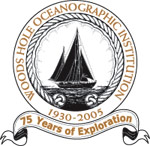This is an archived site. This site is no longer being maintained or reviewed for broken links.
Order your copy of
Down to the Sea for Science today!
Read an excerpt from the book about Mary Sears »
Read six science features
from the book »
Down to the Sea for Science
A book entitled Down to the Sea for Science: 75 Years of Ocean Research, Education, and Exploration at the Woods Hole Oceanographic Institution was published in August 2005. Written by longtime WHOI science writer and editor Vicky Cullen, Down to the Sea for Science is abundantly illustrated and offers a summary chronology of ocean science in Woods Hole beginning in 1863.

Woods Hole Oceanographic Institution (WHOI) has been a major
player in ocean science since its founding in 1930. In 184 pages,
Down to the Sea for Science not only chronicles the growth of this
institution but also offers broader insights into U. S. science at sea
during the twentieth century and beyond.
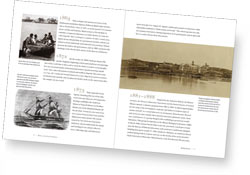
Chapter 1 (1863–1929) describes influential personalities and events that led to establishment of an oceanographic laboratory on the U.S. East Coast, where WHOI joined an already thriving research community in Woods Hole, Massachusetts.
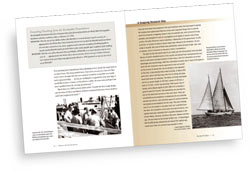
Chapter 2 (1930–1939) begins with
incorporation of the new institution on January 6, 1930,
and describes planning and construction of the first
laboratory building (still in use today) and the first
research vessel, the 142-foot ketch Atlantis. It follows
the early research staff gathering in Woods Hole each
summer “to prosecute the study of oceanography in all
its branches,” as promised in the Institution’s charter.
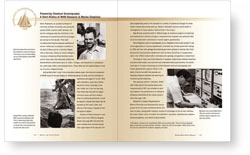
Science Story Lines follow six threads of research from the early days of WHOI to the present. Representing thousands of research projects conducted in various fields over the Institution’s seventy-five years, these stories discuss investigations of the Gulf Stream, air-sea interaction, and gelatinous animals (“jellies”) along with marine geology and geophysics, chemistry, and microbiology.
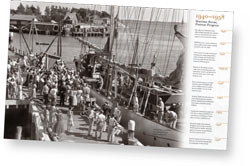
Chapter 3 (1940–1958) describes the Institution’s growth from a summer marine research station to a bustling year-round laboratory devoted to war-related questions ranging from investigation of marine “fouling” of ships to study of underwater explosives. It follows researchers’ return to peacetime studies and the young institution’s path toward strength in an inflationary postwar economy.
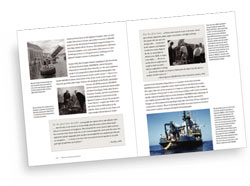
Chapter 4 (1959–1979) chronicles twenty years of astonishing growth for WHOI in a time of increasing national interest in science. New, large research vessels and a submersible take oceanographers around the world and into the deep sea for wide-ranging investigations of oceanographic phenomena. While emphasizing “wise use of the ocean,” the Institution establishes marine-policy and graduate-education programs and expands to a new campus.
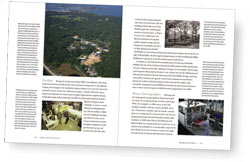
Chapter 5 (1980–2005) introduces today’s Woods Hole Oceanographic Institution, a world leader in marine science. Continuing its rich tradition of excellence in research, WHOI also maintains its reputation for highly skilled marine operations and innovative development of scientific instrumentation.

